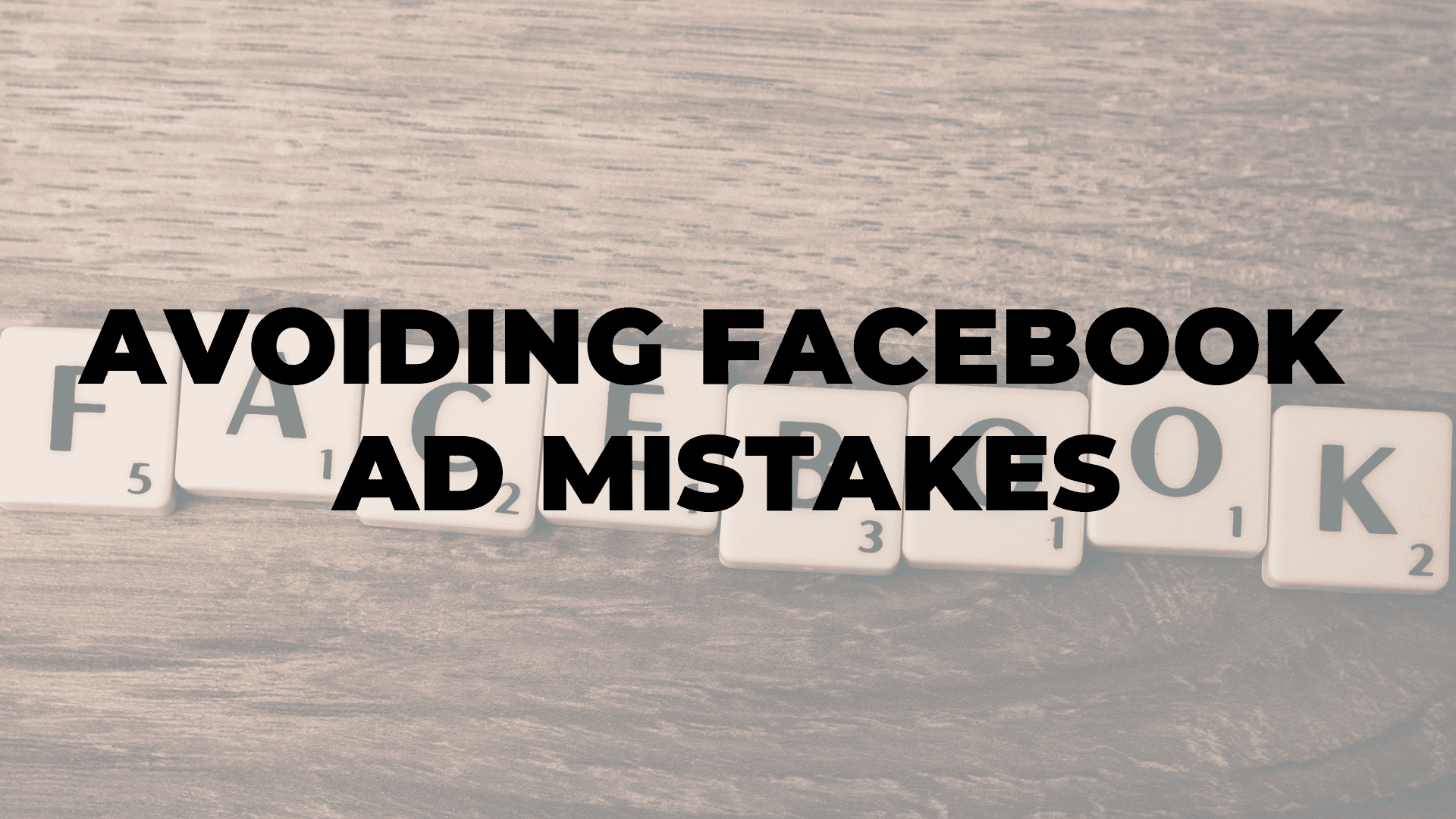Avoiding Facebook Ad Mistakes
Using Facebook Ads can reap some serious benefits for your business, as long as you're using the feature correctly, and avoiding mistakes which might simply be consuming a large part




Using Facebook Ads can reap some serious benefits for your business, as long as you're using the feature correctly, and avoiding mistakes which might simply be consuming a large part of your marketing budget. By avoiding some of the most common Facebook Ad mistakes, you can ensure that your business gets the most benefit out of the Facebook Ads, rather than Facebook itself. The discussion below will center on the most common mistakes which are made by businesses using Facebook Ads, and what you can do to avoid making those mistakes.
Combining multiple interests in one Ad Set

Bundling information when you're creating Facebook Ad Sets is one of the most common mistakes made by marketers. This is a shame because in most cases, a great deal of research was conducted in order to determine what interests those Facebook users had. However, it's a mistake to combine all those interests in the same Ad Set, because it's literally impossible to discover which specific interest users actually have.It's also impossible to find out what kind of similar interests users might have, and this is a situation which makes it extremely difficult to scale your Facebook Ad. A much better approach would be to create a list of all the interests that you're hoping to target and group those interests into several categories. Then you can create a Facebook Ad Set which includes a single category, which makes it much easier to track and to make some valid assessments about.
Allocating insufficient budget to your Facebook Ads
Many businessmen and marketers make the mistake of creating Facebook Ads which are far too complex, including too many campaigns, excessive Ad Sets, and far too many ads in the package. This will almost always cause confusion among readers, which will result in minimal efficiency, higher costs, and ultimately an under-achieving Facebook Ad.You'll be much better off to consolidate your audiences and to use Ad Sets which have larger budgets allocated to them. In this way, you can feed more data to Facebook, achieve your targeted CPA much more quickly, and then scale up as needed. Efficiencies can be gained by placing all your small business owners, digital marketing personnel, and Admin audiences into a single all-inclusive Ad Set.
Focus on earnings per lead

Before any Facebook Ad is rolled out into your advertising campaign, each of the campaign elements should be tested out organically. If your organic post on Facebook generates very few shares, clicks, or sales, then it certainly won't perform any better when it's delivered as an ad. An ad is really only going to intensify the same kind of results you already got through organic testing, which in this case is pretty much zero. It's essential that you obtain the data necessary, to find out whether your ads will work as soon as they're rolled out.A second mistake made by many marketing gurus is to focus on cost per lead rather than earnings per lead. Earnings per lead are much more telling for a business because it is a representation of how much you earn for every individual going through your sales cycle.
Wrong sales objective
A mistake made by great many marketing personnel, especially those with less experience, is to try and use Facebook Ads to make a quick sale, rather than laying the groundwork that leads up to increased sales. This approach generally tries to direct users right to a sales page, so that a sale can be made immediately. The problem with this is that it's really way too fast for most users' tastes, and it does actually violate one of most critical rules of social media advertising – you have to give something before you ask for something.In other words, you need to provide your user with something of value before you attempt to make any sale, and in fact, your true objective should be simple to generate a lead from the process. This approach is on much sounder footing because it uses conversation to build up a relationship with a potential lead, and when a user is finally ready to make a purchase, they're much more likely to look for you.
No follow-up management

You might do everything right in creating your Facebook Ad campaign, and then commit the grievous error of failing to follow up on the Facebook Ad. If you develop a good Facebook campaign and simply let it play out its run, it will almost definitely decrease in value and effectiveness over a period of time.The way to develop sustainable Facebook Ads is to continue to analyze your campaigns while they are in progress. This means you need to assess your cost, frequency, relevance, CPM metrics, and Return on Ad Spend. Once you've evaluated all these aspects, you can adjust them as necessary, even if that means altering your target audience or your ad objectives.
Creating new ads rather than managing old ones
Most of the accounts which spend over a million dollars annually, drive sales with a mere two or three successful ad sets, not hundreds of them. This means that marketing professionals are not optimizing their Facebook Ads, and they're including way too many Ad Sets in them. The way Facebook's optimization algorithm works, it requires at least 50 conversions for a given Ad Set weekly, in order to function properly.So any campaign which has a dozen Ad Sets and only a few conversions is not taking advantage of Facebook's optimization. Any account which spends less than $10,000 a month, probably only needs three campaigns and three ad sets to be really successful. These numbers allow the look-alikes, saved audiences, and custom audiences to become large enough for CPM to do an effective job.A similar mistake to creating too many campaigns is neglecting to put the bulk of your resources into your most successful ads. Rather than creating a steady stream of content, you'd be much better off to continue to invest resources in those Facebook Ads which have generated the most positive results for you.




